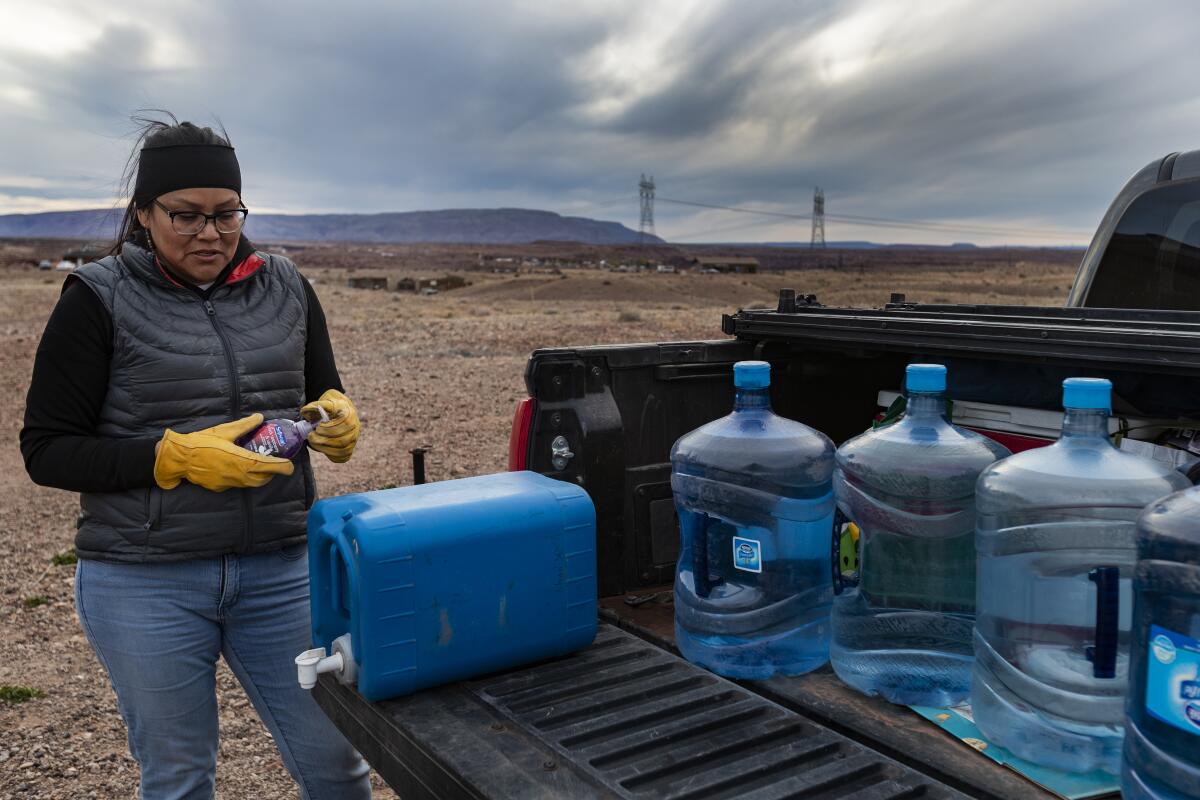Supreme Court rejects Navajo suit seeking more water for reservation

- Share via
WASHINGTON — The Supreme Court on Thursday dashed the hopes of the Navajo Nation for more running water.
The justices threw out a 9th U.S. Circuit Court ruling that said an 1868 treaty confining Navajos to their reservation came with an implied promise that they would have access to water.
The Navajo reservation in Arizona and New Mexico is the nation’s largest, the justices noted, acknowledging that it is desperately short of running water.
But conservative Justice Brett M. Kavanaugh, writing for a 5-4 majority, said that the 19th century treaties that established the reservation “did not require the United States to take affirmative steps to secure water for the tribe,” and that tribes should look to Congress, not the courts, because “it is not the Judiciary’s role to update the law.”
“Allocating water in the arid regions of the American West is often a zero-sum situation,” he wrote, saying that situation “underscores that courts must stay in their proper constitutional lane.”
Justice Amy Coney Barrett cast a key vote with the conservative majority, while fellow conservative Justice Neil M. Gorsuch dissented with the court’s three liberals.
The cases are Arizona vs. Navajo Nation and Department of the Interior vs. Navajo Nation.
Looming over the cases was the drought-stricken Colorado River and the need to reduce the volume of water taken from the river by California, Arizona and Nevada.
Writing in dissent, Gorsuch said the Navajos were merely seeking to have their water rights seriously considered.
“Today, the Navajo Reservation has become ‘the largest Indian reservation in the United States,’ with over ‘17 million acres,’ and over ‘300,000 members,’” he said, referring to citations in the case. “Its western boundary runs alongside a vast stretch of the Colorado River. Yet even today, water remains a precious resource. ‘Members of the Navajo Nation use around 7 gallons of water per day for all of their household needs’ — less than one-tenth the amount the average American household uses. In some parts of the reservation, as much as 91% of Navajo households ‘lack access to water.’
“That deficit owes in part to the fact that no one has ever assessed what water rights the Navajo possess,” Gorsuch said.
Washington lawyer Shay Dvoretzky, representing the Navajo Nation, had argued that the court need not consider the Colorado River at this stage.
“The Nation asks only that the United States, as trustee, assess its people’s needs and develop a plan to meet them,” he said.
For more than a decade, the Navajo Nation has been fighting in federal court for its water rights claims. It won a preliminary victory in 2021 in the 9th Circuit Court of Appeals, which said it had a claim for breach of trust, noting that the 1868 treaty referred to agriculture.
“The Nation’s right to farm reservation lands ... gives rise to an implied
right to the water necessary to do so,” that court said, stopping short of deciding whether this meant “rights to the mainstream of the Colorado River or any other specific water sources.”
But last fall, the Supreme Court agreed to hear appeals from the Interior Department and Arizona that sought to toss out the 9th Circuit’s decision.
U.S. Solicitor Gen. Elizabeth Prelogar argued that the 1868 treaty said nothing about water and established no specific government duties related to water. Moreover, the Navajo Nation has been given water rights from two tributaries of the Colorado River, including San Juan River in Utah, she said.
Lawyers for Arizona, joined by the Metropolitan Water District of Southern California, said that the high court had already allocated the lower Colorado River’s water rights, and that it was too late for lawsuits seeking rights to the same water.
More to Read
Get the L.A. Times Politics newsletter
Deeply reported insights into legislation, politics and policy from Sacramento, Washington and beyond. In your inbox three times per week.
You may occasionally receive promotional content from the Los Angeles Times.










